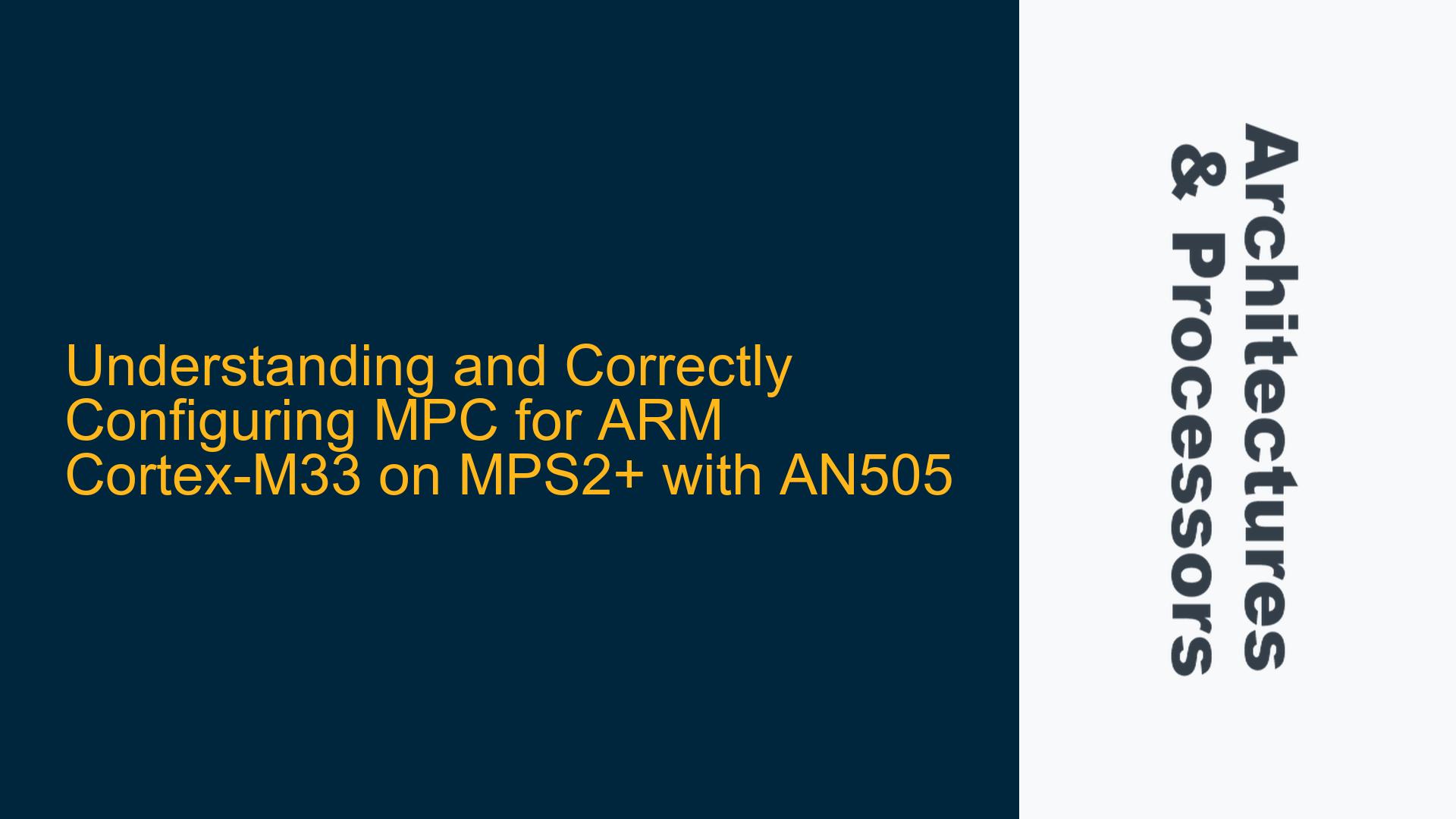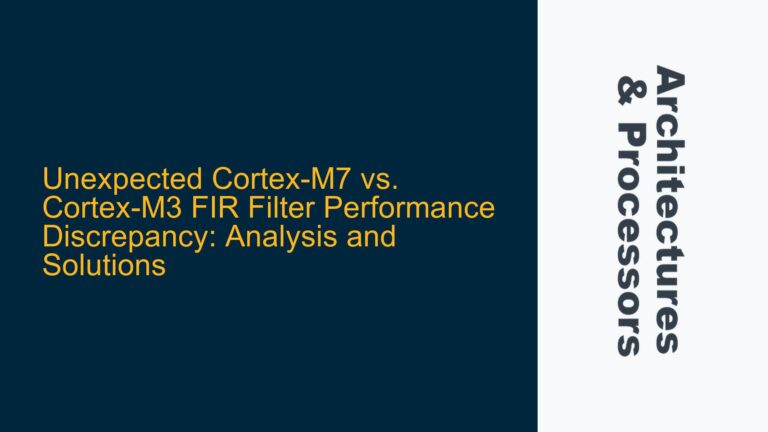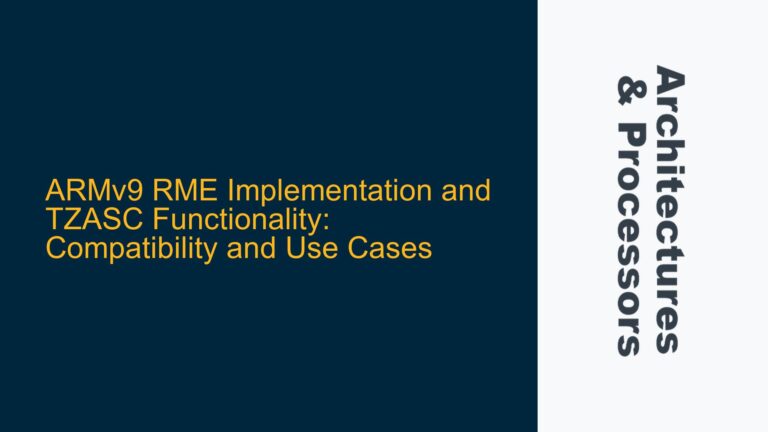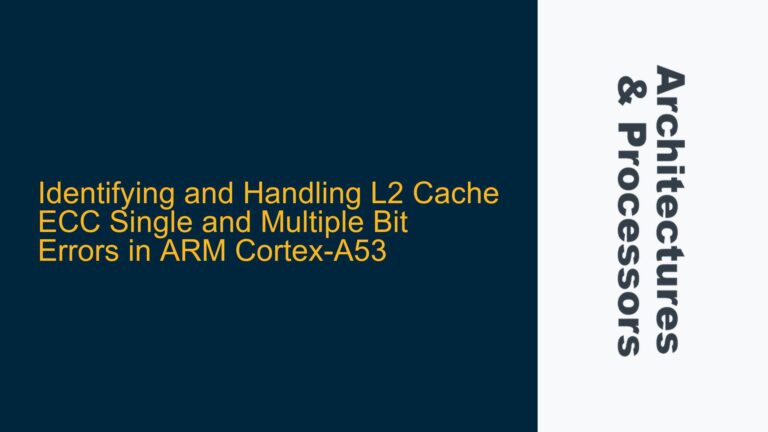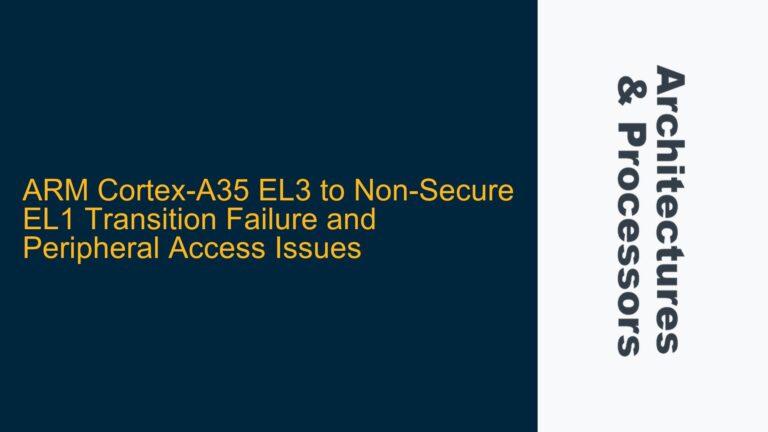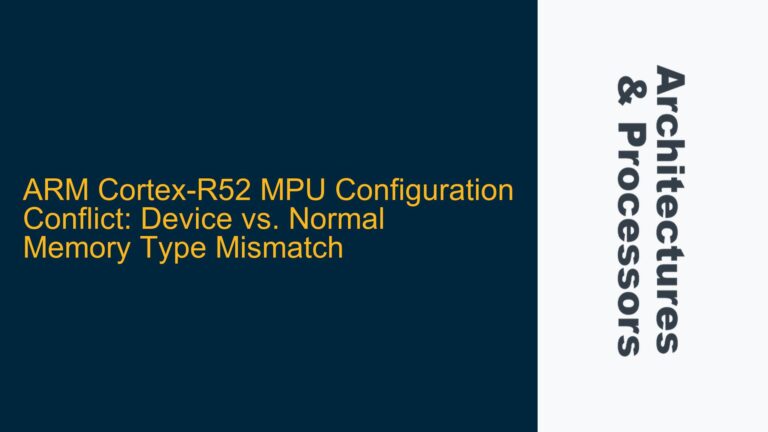ARM Cortex-M33 MPC Configuration for SSRAM1 and SSRAM3 on MPS2+ AN505
The ARM Cortex-M33 processor, as implemented on the MPS2+ board with the AN505 IoT Kit, utilizes Memory Protection Controllers (MPCs) to manage secure and non-secure memory regions. The MPC configuration is critical for ensuring proper memory partitioning, especially in TrustZone-enabled systems. The discussion revolves around the configuration of MPCs for SSRAM1 and SSRAM3, which are mapped to both secure and non-secure address spaces. The primary confusion arises from the block size calculations, block index assignments, and the interpretation of the Look-Up Table (LUT) values. This guide will dissect the configuration process, clarify the misunderstandings, and provide a step-by-step approach to correctly configure the MPCs for SSRAM1 and SSRAM3.
Misalignment in Block Size Calculations and LUT Index Assignments
The first point of confusion lies in the block size calculations and the assignment of the LUT index for SSRAM3. SSRAM3 is a 2MB memory region with a block size of 64KB, which implies that there should be 32 blocks (2048KB / 64KB = 32). Each block is represented by a single bit in the LUT, and since the LUT is 32 bits wide, only one LUT entry is required to configure all 32 blocks. However, the example code sets the BLK_IDX to 1, which is incorrect. The BLK_IDX should be set to 0 because the LUT index starts at 0, and only one LUT entry is needed to cover all 32 blocks of SSRAM3.
The second point of confusion is in the comment for SSRAM1, where it states blk_cnt = 0x10. SSRAM1 is a 4MB memory region with a block size of 128KB, which implies that there should be 32 blocks (4096KB / 128KB = 32). The comment incorrectly states blk_cnt = 0x10, which corresponds to 16 blocks. This is likely a typographical error in the comment, as the actual calculation in the code is correct (0x200000U / blk_size), which results in 32 blocks. The comment should be corrected to reflect the accurate block count.
Correcting MPC Configuration for SSRAM1 and SSRAM3
To correctly configure the MPC for SSRAM1 and SSRAM3, the following steps should be taken:
Step 1: Verify Block Size and Block Count Calculations
For SSRAM1:
- The total size of SSRAM1 is 4MB.
- The block size is 128KB.
- The number of blocks is calculated as
4096KB / 128KB = 32. - The LUT index should start at 0, and only one LUT entry is needed to configure all 32 blocks.
For SSRAM3:
- The total size of SSRAM3 is 2MB.
- The block size is 64KB.
- The number of blocks is calculated as
2048KB / 64KB = 32. - The LUT index should start at 0, and only one LUT entry is needed to configure all 32 blocks.
Step 2: Correct the LUT Index Assignment
For SSRAM1:
- The
BLK_IDXshould be set to 0, as only one LUT entry is needed. - The
BLK_LUTvalue should be set to0xFFFF0000ULto configure the first 16 blocks as non-secure and the remaining 16 blocks as secure.
For SSRAM3:
- The
BLK_IDXshould be set to 0, as only one LUT entry is needed. - The
BLK_LUTvalue should be set to0xFFFFFFFFULto configure all 32 blocks as non-secure.
Step 3: Update the Code with Correct Configuration
The corrected code for configuring SSRAM1 and SSRAM3 is as follows:
/* Configure unsecure code area MPSSSRAM1 (0x00200000 - 0x003FFFFF) */
// blk_max = IOTKIT_MPCSSRAM1->BLK_MAX; /* = 0x1 */
// blk_cfg = IOTKIT_MPCSSRAM1->BLK_CFG; /* = 0xC */
// blk_size = 1UL << (blk_cfg + 5U); /* = 0x20000 = 128 kB, 4MB / 128kB = 32 bit*/
// blk_cnt = 0x200000U / blk_size; /* = 0x20 */
IOTKIT_MPCSSRAM1->CTRL &= ~(1UL << 8U); /* clear auto increment */
IOTKIT_MPCSSRAM1->BLK_IDX = 0; /* write LUT index */
IOTKIT_MPCSSRAM1->BLK_LUT = 0xFFFF0000UL; /* configure blocks. 0x00200000-0x003fffff: non-secure; 0x00000-0x1ffff: secure, alias to 0x10000000-0x101fffff*/
/* Configure unsecure data area MPSSSRAM3 (0x28200000 - 0x283FFFFF) */
// blk_max = IOTKIT_MPCSSRAM3->BLK_MAX; /* = 0x1 */
// blk_cfg = IOTKIT_MPCSSRAM3->BLK_CFG; /* = 0xB */
// blk_size = 1UL << (blk_cfg + 5U); /* = 0x10000 = 64 kB, 2MB / 64 kB = 32 bit */
// blk_cnt = 0x200000U / blk_size; /* = 0x20 */
IOTKIT_MPCSSRAM3->CTRL &= ~(1UL << 8U); /* clear auto increment */
IOTKIT_MPCSSRAM3->BLK_IDX = 0; /* write LUT index */
IOTKIT_MPCSSRAM3->BLK_LUT = 0xFFFFFFFFUL; /* configure blocks */
Step 4: Validate the Configuration
After updating the code, it is essential to validate the configuration to ensure that the memory regions are correctly partitioned between secure and non-secure worlds. This can be done by writing test patterns to the memory regions and verifying that the access permissions are enforced as expected. Additionally, debugging tools such as JTAG probes can be used to inspect the MPC registers and confirm that the LUT values have been correctly set.
Step 5: Address Potential Timing Issues
In some cases, timing issues may arise due to the order in which the MPC registers are configured. It is recommended to insert memory barriers or use the DSB (Data Synchronization Barrier) instruction to ensure that all previous memory accesses are completed before proceeding with the next configuration step. This is particularly important when configuring multiple MPCs or when transitioning between secure and non-secure states.
Step 6: Document the Configuration
Finally, it is crucial to document the MPC configuration thoroughly. This documentation should include the block size calculations, LUT index assignments, and the rationale behind the chosen LUT values. This will aid in future debugging and maintenance of the system.
Conclusion
Configuring the MPC for the ARM Cortex-M33 on the MPS2+ AN505 board requires a clear understanding of the memory layout, block size calculations, and LUT index assignments. By following the steps outlined in this guide, you can ensure that the MPC is correctly configured for both SSRAM1 and SSRAM3, enabling proper memory partitioning between secure and non-secure worlds. Additionally, validating the configuration and addressing potential timing issues will help to avoid subtle hardware-software interaction problems that could lead to system instability or security vulnerabilities.
